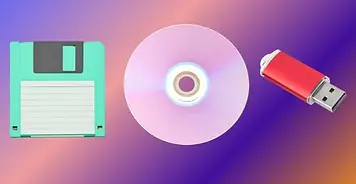TRANSFER FROM FLOPPY DISK TO USB

Rescue Your Retro Data: Floppy Disk to USB Conversion with Video Doc Productions!
Remember the satisfying click of a floppy disk sliding into your computer? Those trusty little squares might seem prehistoric now, but the memories they hold are timeless. Don't let your data languish in digital purgatory – Video Doc Productions is here to bring your floppy disks back to life with fast, reliable conversion to USB!

Why Convert Your Floppy Disks to USB?

-
Accessibility: Access your files on any modern device without clunky drives or outdated software.
-
Preservation: Floppy disks degrade over time. Convert them to USB to ensure your memories last a lifetime.
-
Sharing is Caring: Share your retro treasures with friends and family on social media or cloud storage.
-
Peace of Mind: Sleep soundly knowing your precious data is safe and secure in a modern format.
Time is Ticking, Act Now!
Floppy disks are delicate, and their magnetic storage degrades over time. The longer you wait, the greater the risk of losing your data forever. Don't lose your old data and photos!
Call us today at 352-728-0602 or 407-982-3176 to get started!
Video Doc Productions: Your one-stop shop for rescuing memories from the digital dark ages. Let's bring your retro data back to the future!
P.S. Spread the word! Share this page with your friends and family who might be hoarding a treasure trove of floppy disks. Let's save these digital dinosaurs together!

History and Storage Capacity of a Floppy Disk
The storage capacity of old floppy disks varied greatly depending on their format and generation. Here's a breakdown:
-
8-inch floppies: The earliest commercially successful floppy disks, introduced in the 1970s, could hold a measly 80 kilobytes (KB) of data. That's roughly equivalent to a single high-resolution image today!
-
5.25-inch floppies: These became the predominant format in the 1980s and early 1990s, offering capacities ranging from 180 KB to 1.2 megabytes (MB). A 1.2 MB disk could store a short text document or a low-resolution photo.
-
3.5-inch floppies: The ubiquitous "floppy" of the later 90s and early 2000s boasted capacities of 720 KB to 1.44 MB. This allowed for storing basic software programs, longer text files, and even rudimentary audio files.
-
Zip disks: Introduced in the late 1990s as a high-density alternative, Zip disks could hold a whopping 100 MB or even 250 MB. This was enough for larger files like MP3s or basic image editing software.
-
For comparison, a standard USB flash drive today typically starts at 16 GB, roughly 11,428 times the capacity of a 1.44 MB floppy disk! The evolution of data storage is truly remarkable.
-
Remember, these are just the standard capacities. Special high-density formats and double-sided disks could offer slightly more storage, but the overall concept remains the same: floppy disks pale in comparison to the data-hungry monsters of modern technology.
-
Even though they're obsolete for everyday use, floppy disks hold a special place in tech history. They were the workhorses of early computing, allowing us to store and share information in ways that were unimaginable before. So, next time you come across a dusty old floppy disk, take a moment to appreciate the humble beginnings of digital storage!



